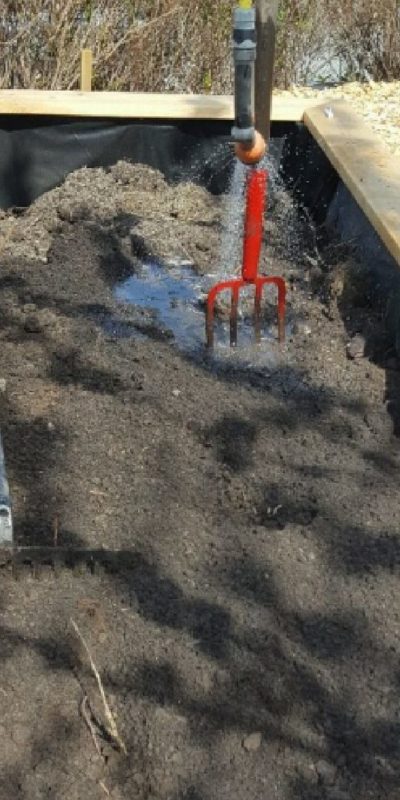The Best Ways to Grow Sweet Potatoes
With the growth of environmental consciousness and a general strive towards a healthier life, growing an eco-friendly garden is the best use of your yard. Nevertheless, starting can be tricky, especially when deciding which veggies to plant first.
Sweet potatoes are a favorite vegetable among gardeners and the usual choice with beginners. The simple beauty of this plant could be the reason enough, but there are also numerous health benefits. Sweet potatoes are full of phytonutrients, fibers, minerals, and vitamins, which certainly makes the effort of growing them worthwhile.
Like every other plant, sweet potatoes have their own growth requirements and we’ve put together a guide below to help you through the process.
The Slips
The first important thing about growing sweet potatoes is that you start them from slips instead of seeds like most other vegetables. When the sweet potato sprouts, slips are those green vines that grow out of it. On a low estimate, you’ll get at least 15 slips from a single sweet potato. This means 15 plants that’ll produce around 60 new sweet potatoes.
You can buy slips from some online stores, seed stores, or nurseries, but you can also grow your own. The only problem is that sweet potatoes in stores are often waxed to stop sprouting. But if you buy organic you’ll probably end up with untreated sweet potato and you’re ready to go.
To make sweet potatoes sprout, wash them carefully, and cut them into large sections. Then place each section in a jar with water so that one half will be below it and the other above it. You can use toothpicks to hold them in place. You need to put the jars somewhere warm, like on top of the radiator. The warmer the better – ideally over 80 degrees F.
In a few weeks, the part above water will grow the slips (while the part under it will grow the roots). You can pinch the slips after they’ve grown two inches and root them in water or you can plant them directly into the ground.

The Soil
Technically, sweet potatoes will grow in poor soil, but they’ll end up stringy and long or develop deformed roots. For best results, well-drained and loose soil is crucial. That way your sweet potatoes will form large tubers and their roots won’t face resistance while expanding.
To achieve this, use a small hand towel to dig holes that are about 3 inches wide and 4-5 inches deep. One slip goes in each hole, roots pointing down. The slips need to be positioned in a way so that the bottom half is covered with dirt and the top one that contains new leaves remains above ground.
In the end, you’ll need to fill the holes with dirt, then gently press down on the plants and the surrounding dirt to remove any air pockets. You need to be really careful during this step so you don’t bruise the new plants. Bumping or bruising sweet potatoes will make them more vulnerable to pests and result in a poor harvest.
To make this step easier, you can grow your sweet potatoes using a no-dig garden approach. As the name suggests, there’s no digging involved so there won’t be any accidental damage. It’s basically arranging four pieces of wood into a box shape and filling it with soil. The process is very quick and you can create your no-dig garden both over grass and concrete.
Sweet potatoes are extremely frost-sensitive, so you need full sun to plant. Wait at least three weeks after the last frost so the soil can warm up. If you’re up north, keep the soil warm by covering the rows with black plastic.
Maintenance
The first thing to do when the slips are in place is to water them. All of the surrounding dirt needs to be wet, so give them a thorough soaking. You need to water new plants every day during the first week and every other day during the second. Following this tempo, you’ll arrive at a frequency of watering once a week. Sweet potatoes can withstand dry spells better than wet ones, but make sure you water them regularly during the hottest days of summer so they don’t rot.
You’ll also need plenty of compost but stay away from nitrogen-rich fertilizers that will produce stunted tubes. To keep the soil loose, conserve moisture, and smother weeds, mulch the wines two weeks after planting. Apart from that, prevent wounds and diseases by handling the plants as little as possible.
Harvest
Sweet potatoes need between 90 to 170 days to mature. The longer you leave the crop in the ground, the higher the vitamin content and the yield. Nevertheless, you need to harvest before the frost blackens the vines since tubers will quickly rot. Harvest on a sunny day when the soil is dry and if you haven’t opted for a no-dig garden approach be careful not to damage your produce when you dig the tubers out.
It’s always better to grow your own splits if you can get your hands on untreated sweet potatoes. Loose and well-drained soil are crucial, as well as plenty of water in the beginning. These vegetables are easily bruised, so it’s best to create a no-dig garden for your first try.


Download Gardenize garden app
You find it in App Store and Google Play.
You can note everything about your plants with own photos and notes, and you can keep a journal of your gardening work. You also get tons of tips and inspriation about gardening in one place!
Find out more about Gardenize on our homepage.




